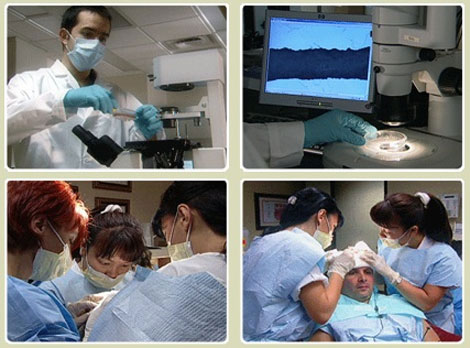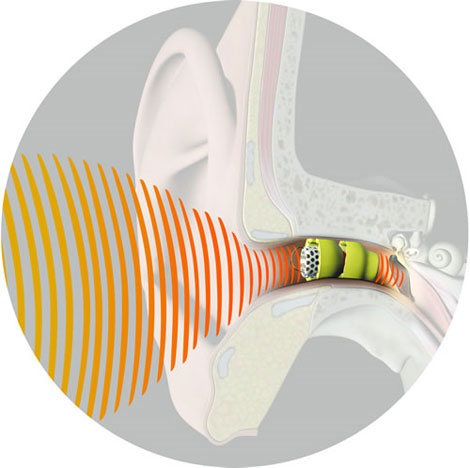Four aesthetic medicine technologies
For the purpose of hearing better, looking more sophisticated, researchers seek to upgrade natural things that are bestowed on us.
There are 4 technologies that are being researched and implemented in the near future through stem cells or microelectronics. They can be widely applied and profitable for cosmetic surgery industry.
1. Next generation hair transplant
Atlanta-based Aderans Research Institute scientists are testing a hair transplant technology, as much as they want. Instead of transplanting each hair root from the patient's tissue, the researchers extracted the cells, bred them in the laboratory, cloned them to hundreds of fibers before transplanting into the scalp.
Applicable time: 5 more years.

2. Hide assistants
Most hearing aids are bulky and ugly. The Center for Sound and Audio Research in California has created a hearing aid that can be said to have an unprecedented sophistication. It is hidden in the ears, not visible and the wearer has no problems. A set of radio-controlled radio controls and the device can allow up to 4 months without withdrawal, and then periodically check the patient's hearing.
It is expected that by the end of 2009, products will be available in the market.

3. Change eye color
Using contact lenses for eye color changes is what people have been doing for years, but they are prone to scratches and spots. Panama-based NewColorIris has developed a new type of glass implanted in the pupil by surgery (the surgery takes only 15 minutes), creating a small hole in the pupil to see through it.
The result is regular glasses, very clear and natural colors like baby eyes.
Now available in Switzerland and Panama. Will enter other countries.

4. Plant your teeth naturally
Tuffs University researchers are trying to use stem cells to repair damaged teeth. They do this: Get the 'growing' tooth cells growing into polymer molds. Then bring that mold into the jaw, where they will regenerate tooth enamel, dentin and tooth marrow. This process has successfully tested pig and mouse.
Perhaps it will take 7 years for this technology to come into practice.

- Application of stem cells into aesthetic field
- WiMAX and 3G are not two mutually exclusive technologies?
- Technologies should and should not be invested in 2005
- Prehistoric people also like fashion
- 10 technologies make us superheroes
- Absolutely do not do when taking western medicine
- Environmental protection technologies
- Should the medicine of oriental medicine be as thick as possible?
- 10 green technologies that change lives
- Future technologies will be popular in 2025
- Smart medicine vial
- Herbal - the perfect complement to western medicine
 Green tea cleans teeth better than mouthwash?
Green tea cleans teeth better than mouthwash? Death kiss: This is why you should not let anyone kiss your baby's lips
Death kiss: This is why you should not let anyone kiss your baby's lips What is salmonellosis?
What is salmonellosis? Caution should be exercised when using aloe vera through eating and drinking
Caution should be exercised when using aloe vera through eating and drinking